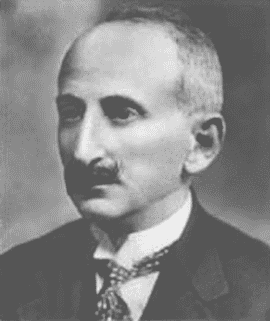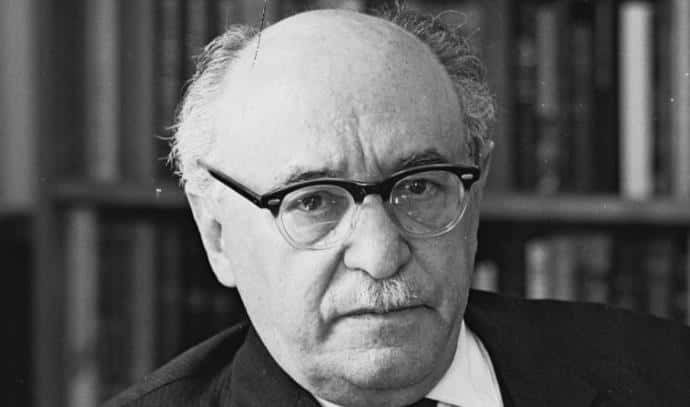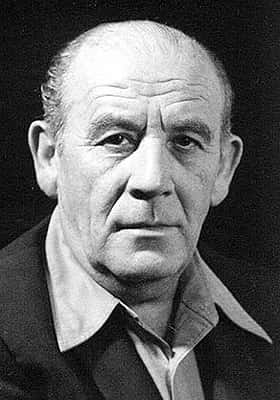Home » Famous figures

(1769-1842) Abraham Stern
A watchmaker, inventor and pioneering developer of calculating machines.
Abraham was born in Hrubieszow to poor parents who had him work as an apprentice to a watchmaker. The young apprentice’s creations drew the attention of local residents, and Stanislaw Staszic, a Catholic priest and intellectual, invited him to Warsaw to continue his studies. Although Stern had a promising career in Warsaw, he maintained his outward appearance as a provincial Jew with a large beard who dressed in traditional garb.
He also contributed to contemporary Hebrew literature, and in honor of Nicholas I’s coronation as Tsar of Russia, Stern wrote an ode called “Song and Prayer”, which was also translated into Polish. He also wrote poems included in an anthology called Shir Musar Heskel (“The Poem of the Moral”), which was published in Warsaw in 1935. He was buried in the cemetery of Warsaw’s Praga district.

(1877-1937) Boleslav Lashemian
A Polish-Jewish poet, writer, essayist, literary critic, playwright and translator.
He was considered one of Poland’s greatest poets. He was born in Warsaw to an assimilated Jewish family, and during his childhood and youth, he lived with his family in Kiev, Ukraine, where he graduated high school and law school. He lived in Hrubieszow between 1918 and 1934, where he worked as a notary in the field of large estates. During that time, he published two very successful books of poetry, and he was elected as a member of the Polish National Academy of Arts. In 1935 he moved back to Warsaw, where he eventually died. Czeslaw Milosz, a Nobel Prize Laureate for Literature (1980), said the following of Leśmian: “None of the poets belonging to the ‘Young Poland’ movement can be compared to Bolesław Leśmian, who is counted among the great poets of contemporary European literature.”

(1889-1974) Zalman Shazar
The third president of the State of Israel, a writer, a poet, a historian, a Zionist leader and member of Knesset, and the minister of education and culture in the Israel’s first government.
Shazar was born as Shneur Zalman Rubashov in the White Russian town of Mir, and he later changed his last name to Shazar – the initials of Shneur Zalman Rubashov. He was the great-great-grandson of Rabbi Meir, who was the president of the Jewish court of Hrubieszow, hence the family name – Rubashov. Shazar emigrated to Israel in 1924. He was one of the founders of the Mapai party (the forerunners of today’s Labor Party) and a member of “Davar” newspaper’s first editorial team. Upon Berl Katznelson’s death, he was appointed editor-in-chief of the newspaper, and he also served as the director of Am Oved Publishers. When Israeli President Yitzhak Ben Zvi died in 1963, Shazar was elected president of Israel, and served two terms, until May 1973.
After his death, he was buried in the Great Leaders of the Nation plot on Mount Herzl, in Jerusalem. The Zalman Shazar Center for Jewish History was established in his memory, and his portrait appeared on the 200-shekel bill, which was issued in the first series of new Israeli shekel bills.

(1910-1991) Yosef Almogi
Partisan, Israeli politician and political leader.
Born as Yosef-Aharon Karlenbaum in the Polish town of Hrubieszow to a Belz hasidic family, after graduating from high school, in 1929, he immigrated to Israel and joined a group called “Hakovesh” which was involved in the “conquest of labor” movement (i.e. Jews embracing the ideal of manual labor) in Petah Tikva and Kfar Saba. In 1932, a nucleus of group members founded Kibbutz Ramat HaKovesh. In 1937, Almogi moved to Haifa, where he was appointed by Haifa mayor Abba Hushi to head the Plugot Hapo’el (the “worker squads”). Concurrently, he continued working as a professional construction worker. Just before enlisting in the British army in 1940, he moved with his family to a house in Kfar Saba that he had built with his own two hands.
Almogi, who was a member of the Haganah, volunteered for the British Army and served in the Royal Pioneer Corps in Egypt, Libya and Greece. On April 29, 1941, he was captured by Nazi Germany, along with about 1,500 other Jewish soldiers from British Mandatory Palestine, and imprisoned in a POW camp in Silesia, where he remained until 1945. Throughout his years in captivity, Almogi, along with other Jewish prisoners, assumed the role of managing and treating all prisoners of war from Mandatory Palestine, working with the POW camp’s headquarters and the representative of the British POWs. Among his other memorable deeds was insisting that Yitzhak Elkind, a POW who had died in hospital from cancer, be buried with full military honors, which he arranged with the camp commander. Almogi arranged the ceremony in accordance with Jewish custom, wrapped the casket in an Israeli flag, and chanted the prayers El Maleh Rahamim and Kaddish.
At the end of the war, after being released from captivity, he was discharged from military service, and he immigrated to Israel. In 1948, he changed its name to “Almogi”, and after the establishment of the State of Israel, he held many public offices, such as serving as a member of parliament representing the Mapai party, and as minister of housing and development, minister of labor and mayor of Haifa. He died on November 2nd, 1991 and is buried in Hof Hakarmel Cemetery.